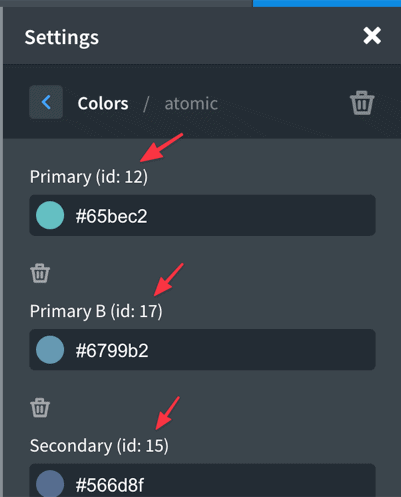It is possible to reference
- global colors
- element’s ID and
- Easy Posts element’s ID
using variables in Oxygen.
Let’s take a look at these in this article.
Global Colors
Every color in the Settings > Global Styles > Colors will have a ID.

These can be referenced in this format wherever hex color code can be entered:
color(12)This could be for example, in the Text Color input field or inside Custom CSS or Easy Post’s Template CSS.

Element ID
%%ELEMENT_ID%%could be used to refer to the current element’s ID.
Ex.:
(function($) {
$('#%%ELEMENT_ID%%').css('color', 'green');
})(jQuery);in the JavaScript panel for a Heading component will for example, change its text color to green after “Apply Code” is clicked.
More examples:
1)
(function($) {
'use strict';
$('#%%ELEMENT_ID%%').attr('data-flickity', '{ "cellAlign": "left", "contain": true }');
}(jQuery));2)
jQuery(window).scroll(function() {
if (jQuery( "#%%ELEMENT_ID%%" ).hasClass( "oxy-sticky-header-active" )) {
jQuery("#inner_content-22-6").css("margin-top", "180px");
}
});3)
jQuery(document).ready(function($){
$("#%%ELEMENT_ID%% video").removeAttr("loop");
});4)
jQuery(document).ready(function($){
$("#%%ELEMENT_ID%%").delay(2000).fadeIn(2000);
});5)
jQuery('#%%ELEMENT_ID%% .oxy-tab').mouseenter(function() { jQuery(this).click() });Easy Posts ID
%%EPID%%refers to the current Easy Posts instance’ ID.
For example,
%%EPID%% .oxy-posts {
display: flex;
flex-direction: row;
flex-wrap: wrap;
}in Template CSS will be output as

where #_posts_grid-1061-2 is the ID of the Easy Posts component.